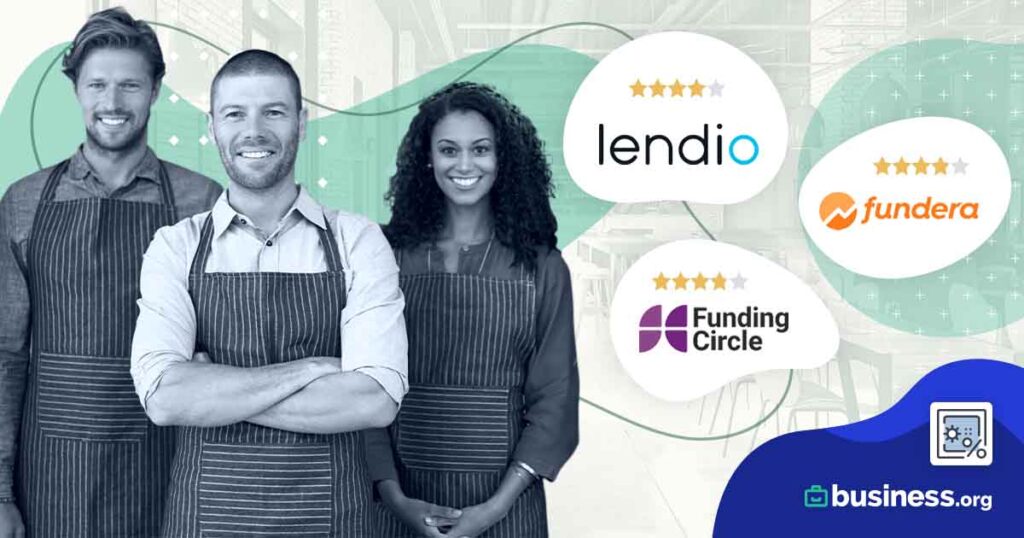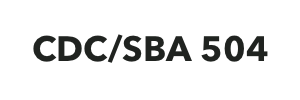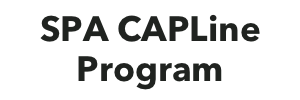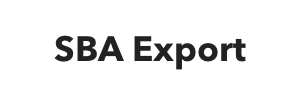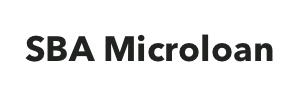We are committed to sharing unbiased reviews. Some of the links on our site are from our partners who compensate us. Read our editorial guidelines and advertising disclosure.
The Types of SBA Business Loans Explained
They weren’t Happy Days for everyone: the U.S. Small Business Administration was formed by Congress in the 1950s because, even though it was the post-WWII “Decade of Prosperity,” commercial banks offered little for small businesses at the time. No wonder Fonzie never opened his auto shop.
SBA-backed loans were created to give corner shops the same access to much-needed capital that banks were already making readily available to large institutions with collateral, assets, cash flows, and established business track records. The SBA presented an alternative to the old “it takes money to make money” approach for small businesses just starting up (though the phrase “startup” wouldn’t come into play until a few decades later).
Note that the literal term isn’t “SBA loans” but “SBA-backed loans.” This is because SBA doesn’t make loans directly. Instead, it creates guarantee-assurance guidelines with the input of banks, offline and online lenders, economic development organizations, micro-enterprise lenders, and other financial-industry partners. With that guarantee in place, SBA-approved banks and lenders are more confident that the small-business loan will be repaid and are more likely to take a chance on a borrower rather than turn them down outright. As a bonus, SBA-backed loans usually come with lower interest rates.
Sounds great so far, but there’s a catch—especially if you need the money fast. As with anything else, the involvement of the federal government makes the process slower and more complex; SBA-backed loans come with a unique set of qualifications that must be met, which can take several months. Those qualifications include these:
- Being rejected for private financing. An SBA-backed loan can’t be your first option—you first have to apply, and then be turned down for, a standard bank loan on your own. It may seem like a waste of time to pursue a funding avenue that you know won’t pan out for your small business, but it’s the law (once again, we’re dealing with the government here). The SBA can’t legally guarantee loans for businesses that could demonstrably obtain them independently through private financing.
- Fitting the definition of a “small” business. Does the government recognize your small business as small enough to qualify for an SBA-backed loan? Size requirements vary by industry; some are measured by annual average revenue receipts while others are based on actual number of employees, which is typically capped at 500 (part-time workers and temps count as full-time employees, but volunteers don’t).
- Meeting lender qualifications. After you determine that your business is SBA-eligible, you can apply for a loan through an SBA-preferred lender. There are six SBA loan programs, and each comes with its own set of qualifications—although a credit score of at least 680 is standard for most. Within some of the programs, there are breakout tiers with more specific qualifications and different payouts, and most are self-explanatory (microloans are for smaller amounts of money, export loans are for exporters, and disaster loans are something you’ll hopefully never need to look into, etc.).
By signing up I agree to the Terms of Use.
SBA loans in depth
SBA 7(a) loan
Designed for establishing working capital, refinancing debts, and purchasing real estate, equipment, or another business, SBA 7(a) loans are the most commonly utilized and straightforward U.S. Small Business Administration payouts.
Besides the wide usage parameters, SBA 7(a) loans are popular because of their low interest rates, extended repayment terms, and high loan ceiling (you can borrow up to $5 million—few would recommend it, but you can apply).
Not that they’re easy to get: SBA 7(a) loans require a credit score of at least 680; a background free of recent bankruptcies, foreclosures, or tax liens; and a 10% down payment if you’re using it to buy commercial real estate, equipment, or another business. You’ll also need at least two years of business under your belt.
SBA Express loans and SBA 7(a) Advantage loans, two variations of the standard SBA 7(a) loan, are available to speed up or expand the original 7(a) program. SBA Express loans guarantee a lender response within 36 hours (though the loan process will likely take the same amount of time), have slightly higher interest rates, and cap borrowing at $500,000. SBA Advantage loans (loan cap: $350,000), which are also Express fast-tracked, target businesses in underserved, cash-strapped markets that don’t qualify for standard SBA 7(a) loans.
Interested and want to know more? Head on to our ultimate guide to SBA 7(a) loans, where we go into the nitty-gritty details and fill you in with some helpful insights.
CDC/SBA 504 loan
Tailored for small businesses planning to buy, or build, owner-occupied commercial real estate, CDC/SBA 504 loans introduce a third party to the process: a local community development corporation.
Working with a bank or lender, the CDC typically lends 40%—and the bank or lender contributes 50%—with the remaining 10% falling to the borrower in the form of a down payment.
To qualify for a CDC/SBA 504 loan, your business would need to physically occupy at least 51% of the commercial structure. In addition, a 680 credit score is required (as with the SBA 7(a) loans), and you must meet the local CDC’s job creation and public policy goals. The SBA doesn’t oversee the rates, fees, and terms of the bank’s or lender’s side of the loan, but it does set the CDC’s side: 10-year loans at 4.85% fixed interest or 20-year loans at 5.07% fixed interest.
Like the sound of that? Check out our guide to SBA 504 loans just for you.
SBA CAPLine program
If your business needs are short-term or seasonal, SBA CAPLines may have a solution for you—five, in fact. The CAPLine program offers small businesses revolving or fixed credit lines up to $5 million, with a five-year repayment schedule.
Other than the rare exception, CAPLine loans are issued in tandem with SBA 7(a) or CDC/SBA 504 loans.
As we mentioned, there are five types of credit lines:
- Seasonal lines of credit are for cyclical annual increases in business expenditures, such as labor costs, inventory replenishment, and accounts receivable.
- Contract lines of credit are for labor and materials attached to assignable contracts and sub-contracts.
- Builder’s lines of credit are for the construction or renovation of commercial properties, labor costs, materials, equipment, permits, and real estate.
- Standard asset-based lines of credit are for the conversion of short-term assets to cash ($5 million credit line).
- Small asset-based lines of credit are for the conversion of short-term assets to cash ($200,000 credit line).
SBA Export loan
Crafted to help domestic businesses grow their export activities in foreign markets and conduct international transactions, SBA Export loans require a 20% guarantee from owners but only one year in business.
You’ll also be asked to prove your business’s viability in foreign markets and demonstrate how the loan will make your exports more competitive. SBA Export loans come in three types:
- SBA International Trade loans offer up to $5 million in funding for businesses that export or have been affected negatively by imports.
- SBA Export Working Capital loans provide funding of up to $5 million to cover purchase orders from foreign parties.
- SBA Export Express loans, similar to SBA Express loans, offer a quicker turnaround, with a credit line limit of $500,000.
SBA Microloan
Acting as a liaison between the SBA and businesses with smaller capital needs, nonprofit intermediary lenders are granted SBA microloans to fund small businesses and nonprofit centers up to $50,000—though the average microloan is for around $14,000. The SBA doesn’t guarantee microloans past the administration’s initial involvement, and intermediary lenders must work with SBA-approved local agents (of which some states have several while most have just one).
SBA Disaster loan
SBA disaster loans cover catastrophes, both physical and economical, with three types of loans that can be accessed simultaneously:
- SBA Business Physical Disaster loans are low-rate, long-term loans to assist businesses that have experienced losses and damages due to officially declared disasters or need to repair uninsured property.
- SBA Economic Injury Disaster loans provide shorter-term loans of capital to help businesses and nonprofits remain in operation during times of appreciable economic hardship.
- SBA Military Reservists Economic Injury loans offer shorter-term loans to businesses that have lost an employee (or employees) to active military service.
Remember how other types of SBA loans are backed by the SBA but funded by direct lenders? Well, SBA disaster loans come straight from the SBA. So if you need a disaster loan, you’ll apply directly on the SBA Disaster Loan Assistance website―not with a lender.
Note that your business must be in an officially declared disaster area to qualify for an SBA disaster loan. Again, the SBA Disaster Loan Assistance website has your back with its list of current declared disasters. In many cases, disasters are declared at a statewide level, but sometimes they’re declared at a county level too.
If your business is in an eligible area, the SBA’s website will provide you with a fact sheet that has relevant information on what types of disaster loans are available, as well as the filing deadline, credit requirements, loan terms, loan amounts, and other important details.
If you qualify for an SBA disaster loan, remember that you must use it for disaster-related expenses. For example, if your building was damaged by a hurricane, you can use the loan for repairs. If you had to close in a declared disaster area, you can use it to pay bills or cover payroll. You can even use it to purchase inventory to get your store back on its feet.
But disaster loans can’t be used for non-disaster expenses, like refinancing old debts or renovating an out-of-date―but unaffected―office.
Calculating loan payments
Knowing exactly how much you’ll be able to pay out monthly on a loan is more important than which SBA loan(s) you eventually choose for your business. Overall loan sums are partially determined by your credit score, financial projections, purpose for the loan, and what you can afford; loan payment amounts are estimated by loan sum, interest rate, term length, and lender guarantee fee.
SBA loans can come with either a variable or fixed interest rate, and the largest factor in arriving at your loan’s interest rate is your credit score (general rule: higher score = lower rate). For loans over $150,000, the SBA requires its partner lenders to pay a fee for its advocacy—which the lender will usually make back by tacking some extra digits onto your monthly statement. For a clearer picture of what your monthly payments might be on an SBA loan, consult a simple (and free) SBA loan payment calculator.
Determining eligibility
“Lenders and loan programs have unique eligibility requirements,” states sba.gov. “In general, eligibility is based on what a business does to receive its income, the character of its ownership, and where the business operates.” The SBA’s essential qualifications include company size (as in, is the business technically “small” in terms of employee count or annual income), ability to repay the loan (though those with bad credit may qualify), and viability of business plan—all in addition to simply being a US-based company, proving owner-invested equity, and being turned down by commercial lenders.
Applying for an SBA loan
You’ll need to assemble a loan package presentation for potential SBA lenders, which will require more information than just “Conglomo Bank across the street declined me.” Here’s what you’ll need:
- Knowledge of your credit score. Fair or not, lenders mostly measure character by your credit score, or FICO score—and you don’t want to be just learning your number at the same time they are. Research your credit score and be prepared to document it should questions or a third party arise. Remember: 680 is the SBA baseline.
- A solid business plan. Lay out in writing exactly what your business is, how you’ll be spending the money, and why the business will eventually be successful (which may require as much imagination as foresight, in some cases). Be as detailed as possible, and consult with more experienced business owners if possible.
- Your complete financial history. If you already have a business, you’ll need to include its profit and loss records as well as your own financial history. If you’re just starting a business, you’ll have to go on your personal economic history, which will be a harder sell for obtaining an SBA loan.
- A list of SBA lenders. You can locate local SBA lenders through SBA.gov; your first contacts will be made directly with the lenders (commercial banks, credit unions, etc.), not the administration itself. If you don’t already, you’ll also want to retain an accountant and an attorney who know your industry.
Enter your loan needs and qualifications to get matched with a list of lenders best suited to you. Then, sort by the financing factor that you find most important. (Note: not all lenders allow personal loans for business use.)
The takeaway
Even though they might be considered a “last resort” financial option for businesses that can’t find funding through traditional routes, SBA-backed loans aren’t necessarily easy to obtain. Along with a decent credit score, you’ll need a bulletproof business plan and an impeccable presentation to convince a lender to take a chance on you—even with an SBA safety net, defaulting on a loan is bad for everyone’s business. But if you’re ready to jump through the extra hoops, an SBA loan could be your leg up to success.
Interested in getting an SBA loan? Then check out our SmartBiz review to learn more about our favorite place to apply for SBA loans.
Related reading
Types of SBA loans FAQ
SBA 7(a) loans work for various small business needs, including working capital, refinancing, commercial real estate, and equipment. SBA 504 loans only work for commercial real estate and equipment. Plus, their loans are offered with higher dollar amounts (up to $20 million) and lower rates.
We go over these briefly in a table and in-depth above, but here is a list of all six of them: SBA 7(a) loan, SBA 504 loan, SBA CAPline Program, SBA Export loan, SBA Microloan, and SBA Disaster Loan.
The SBA 7(a) loan and Microloan are used for working capital (with different loan amounts), the SBA 504 loan is used for purchasing commercial real estate, and the SBA CAPline is a short-term line of credit. The SBA Export loan is used for expanding export businesses, and the SBA Disaster loan is for businesses who've underwent a physical or economic catastrophe.
Disclaimer
At Business.org, our research is meant to offer general product and service recommendations. We don't guarantee that our suggestions will work best for each individual or business, so consider your unique needs when choosing products and services.



